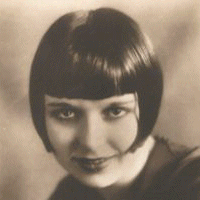
text extract from:
http://www.filmsite.org/20sintro.html
Silent Films are the films of the early era that were without sound, from the earliest film (around 1891), until 1927, when the first 'talkie', The Jazz Singer (1927) was produced, although there were a few other 'silents' later on, such as City Lights (1931).
Calling them silent films is something of a misnomer - movie theatres and other dream palaces provided pianists, wurlitzers, and other sound machines, and some films were produced with complete musical scores. Most early silents were accompanied with a full-fledged orchestra, organist or pianist to provide musical background and to underscore the narrative on the screen. Unfortunately, many of the early classics have been lost to decomposing nitrate film bases and outright destruction.
Many early silent films were either dramas, romances, slapstick, or comedies. Early masters of cinema during the silent years included Cecil B. De Mille, known for his epics such as The Ten Commandments (1923), Erich Von Stroheim's dramatic tale of the degenerative effects of avarice in Greed (1924), King Vidor's war drama The Big Parade (1925) and his simple yet dramatic story The Crowd (1928) of a young couple in the city experiencing the plight of Everyman. In addition, F. W. Murnau is most famous for his silent melodramatic masterpiece Sunrise (1927).
Early pioneering director D. W. Griffith was often identified with epics including:
the Civil War saga The Birth of a Nation (1915)
the spectacular saga Intolerance (1916) with four inter-woven narratives
Broken Blossoms (1919), the melodramatic story of an abused girl (Lillian Gish) who is cared for by a young Chinese man
Orphans of the Storm (1921) - a tale set during the French Revolution
The most-remembered films from the silent years are the visual comedies from the Mack Sennett Keystone Kops series, starring Fatty Arbuckle and Mabel Normand, and slapstick from the 'silent clowns.' Tragi-comic superstar Charlie Chaplin is most noted for The Kid (1921), his classics including The Gold Rush (1925), the exquisite City Lights (1931), and his first mute "silent film" with sound Modern Times (1936) - a satire on the machine age.
Physically-daring comedian Buster Keaton ("Old or Great Stoneface") appeared in many other classic comedies, including Sherlock Jr. (1924), The General (1927), and Steamboat Bill, Jr. (1928). Harold Lloyd's most famous silent film found him dangling from a clock on the side of a city building in Safety Last (1923).
Douglas Fairbanks, Sr. also became an American legend after switching from light comedies and starring in a series of exciting, costumed swashbuckler and adventure/fantasy films, starting with The Mark of Zorro (1920), soon followed with his expensively-financed adventure film, Robin Hood (1922), and the first of four versions of the classic Arabian nights tale by director Raoul Walsh, The Thief of Bagdad (1924), with magical "flying carpet" special effects. Another first occurred in 1926 - a Hollywood film premiere double-featured two films together: Fairbanks' The Black Pirate (1926) with early two-color Technicolor (and the superstar's most famous stunt of riding down a ship's sail on a knife) and Mary Pickford's melodramatic film Sparrows (1926). Fairbanks scored again at the close of the decade with The Iron Mask (1929). The first and only film that co-featured both stars was a talkie version of The Taming of the Shrew (1929). Pickford's Coquette (1929), her first all-talking film, won her an Academy Award, but she retired prematurely four years later
Other 1920s Box-Office Stars:
The top box-office stars in the 1920s included Harold Lloyd, Gloria Swanson, Tom Mix, Norma Talmadge, Rudolph Valentino, Douglas Fairbanks Sr., Colleen Moore, Norma Shearer, John Barrymore, Greta Garbo, Lon Chaney, Clara Bow, and "Little Mary" Pickford.
Hauntingly mysterious and divine, Greta Garbo's first American film was The Torrent (1926), followed quickly by The Temptress (1926). Her first major starring vehicle was as a sultry temptress in torrid, prone love scenes with off-screen lover John Gilbert in Flesh and the Devil (1926). MGM renamed Broadway actress Lucille Le Sueur and christened her "Joan Crawford" in 1925.
And Louise Brooks
 made her debut film in mid-decade with Street of Forgotten Men (1925). Glamorous MGM star Norma Shearer insured her future success as "The First Lady of the Screen" by marrying genius MGM production supervisor Irving Thalberg in 1927.
made her debut film in mid-decade with Street of Forgotten Men (1925). Glamorous MGM star Norma Shearer insured her future success as "The First Lady of the Screen" by marrying genius MGM production supervisor Irving Thalberg in 1927. Clara Bow, a red-haired, lower-class Brooklyn girl was subjected to a major publicity campaign by B. P. Schulberg (of Preferred Pictures (1920-1926) and then Paramount's head of production in the late 20s and early 30s).
He promoted his up-and-coming, vivacious future star as his own personal star, after grooming and molding her for her star-making hit film The Plastic Age (1925) as a flirtatious flapper - the "hottest Jazz Baby in Film."
Bow was also exceptional in Dancing Mothers (1926) and in her smash hit Mantrap (1926), and was further promoted with teaser campaigns for It (1927).
She soon became known as "The It (sex appeal) Girl" (in the high-living age of flappers) after its February 1927 release.
She was boosted to Paramount Studios' super-stardom in the late 1920s by more publicity campaigns, fan magazine glamorization, and rumor-spreading.
Bow also starred in the epic WWI film Wings (1927), and in 1928 became the highest paid movie star (at $35,000/week).
But by 1933, after years of victimizing exploitation, she had gone into serious decline and retired due to hard-drinking, exhaustion, gambling, emotional problems, a poor choice of roles, the revelation of a heavy working-class Brooklyn accent in the talkies, and a burgeoning weight problem.
.gif)
